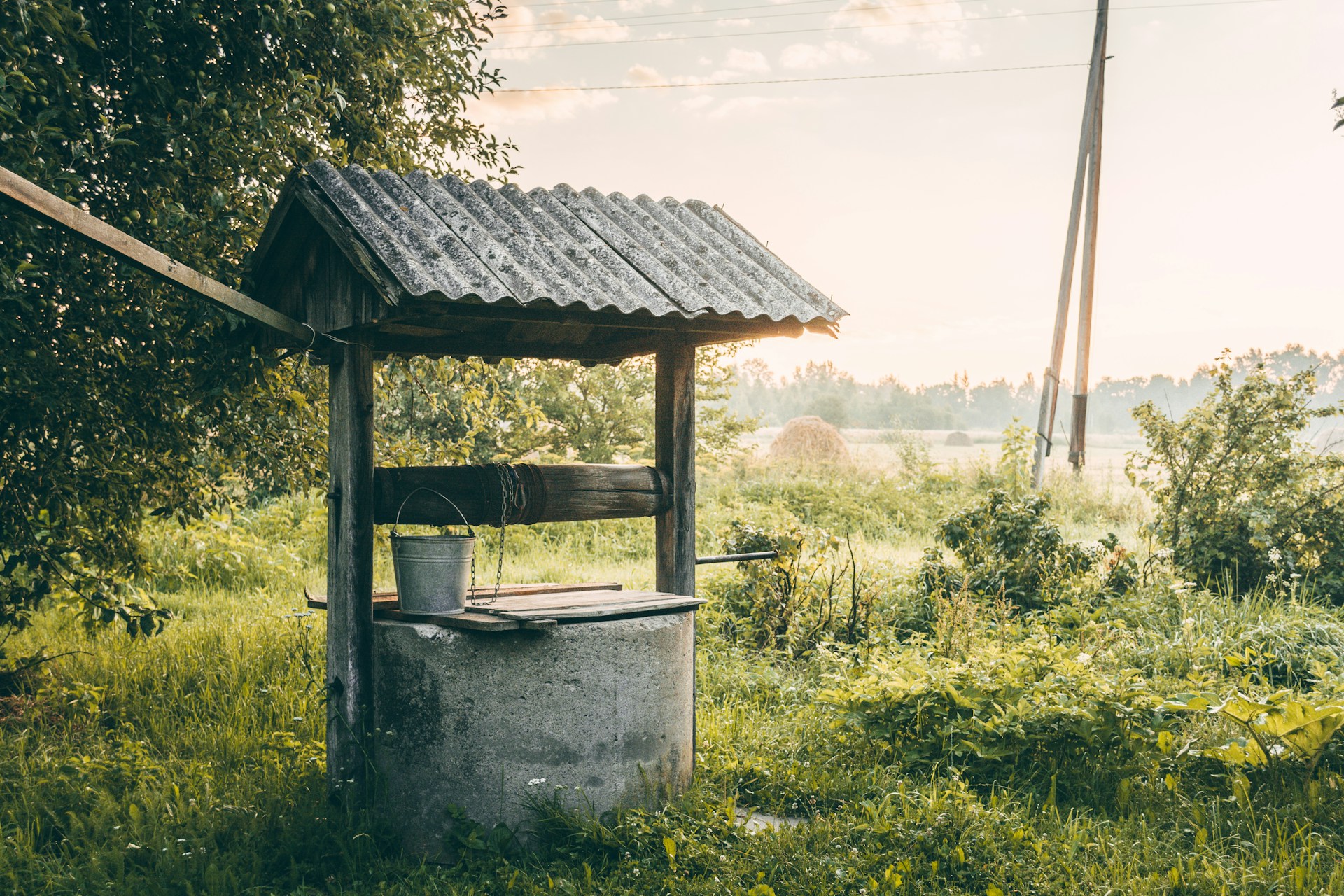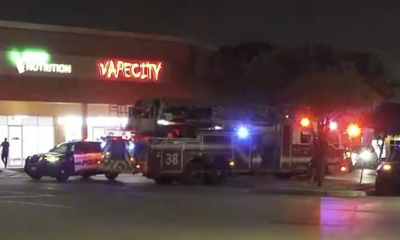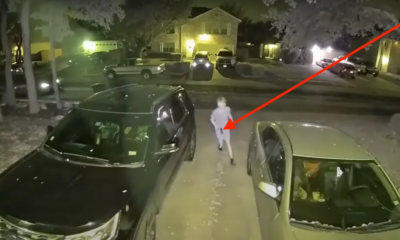Preparedness
Texas Self-Defense Claim Unravels: Homeowner Arrested in Murky Intruder Case

Douglas Watters, 56, found himself in hot water recently after the police were called to his home in Corpus Christi, Texas. Watters dialed 911 at approximately 7:51 a.m., claiming he had shot and killed a man who was attempting to break into his home, assisted by a female accomplice.
However, upon arriving at the scene, the Corpus Christi Police Department was met with details that didn’t quite add up. Watters openly expressed his frustration with the police for their delay in responding to his distress call. But the police, in their defense, claimed to have arrived only 13 minutes after the call was made.
Upon entering Watters’ home, the officers discovered the lifeless body of a 48-year-old man. From Watters’ account, he’d shot the man a mere seven minutes prior to making the 911 call. However, the state of the body disagreed with his narration.
A senior police officer brought attention to the fact that the body appeared “stiff and pale,” a state that indicated death had occurred hours prior to Watters’ 911 call.
This was subsequently confirmed by medics who arrived on the scene, asserting that the body had indeed been dead for several hours. The mystery deepened as police found a pump-action shotgun with an unspent shell and one spent shell at the scene. The medical examiner’s report revealed the deceased had been shot twice in the left torso underneath his armpit.
The following day, Watters was arrested on a murder charge and is currently being held on a $500,000 bond.
The condition of the home posed its own challenges to the investigation. It was reported as extremely cluttered, to the point where navigating around was difficult. Police also noted the house appeared to be abandoned and without electricity.
In a twist to the story, an individual interviewed by police claimed that while Watters was indeed the owner of the house, he did not reside there. Further information gathered by KIII-TV revealed that Watters owned several properties within the county.
The details of this case, including the booking photo of the accused and a video of the home, were made public via a news video on KIII’s YouTube channel.
Remember to sign up for the Grits and Gear newsletter to stay up-to-date on stories like this, delivered directly to your inbox.
Watch a local news report about the incident below:
Let us know what you think, please share your thoughts in the comments below.

Preparedness
Prepare for Economic Turbulence: Essential Steps for Your Family

With the national debt exceeding $36 trillion and inflation continuing to strain budgets, the prospect of an economic downturn looms large. Even with decisive leadership, the challenges ahead may be insurmountable for many. A significant portion of the population perceives the economy as being in less-than-ideal shape, with 63% identifying inflation as a substantial national issue.
The looming threat of a recession is not just speculative. J.P. Morgan’s chief economist estimates a 40% probability of a recession, highlighting the fact that many Americans are not adequately prepared. This concern is echoed by consumer sentiment, with Fortune reporting a consistent decline in U.S. consumer confidence over several months.
“The Conference Board’s report Tuesday said that the measure of Americans’ short-term expectations for income, business and the job market fell 9.6 points to 65.2,” marking a 12-year low. This figure is significantly below the threshold that often signals an impending recession.
Even political leaders acknowledge the potential for economic turbulence. President Trump has spoken of a “period of transition” due to his trade and tariff policies, while Elon Musk has warned of a “necessary economic collapse.” These concerns are mirrored in public sentiment, with rising searches for “financial stress” indicating heightened anxiety.
The potential impacts of an economic crisis are varied and severe. From runaway inflation to a stock market crash or supply-chain failures, the consequences could be dire. Historical precedents, such as the Great Depression and the 2008 recession, illustrate the potential severity of such events.
During the Great Depression, a drastic stock market crash led to widespread unemployment and bank failures. The 2008 recession similarly devastated financial sectors, causing massive job losses and home foreclosures. The near-collapse of the U.S. economy during this time underscored its vulnerability.
International examples, like Venezuela’s current crisis and Sri Lanka’s 2022 financial struggles, further emphasize the potential consequences of economic instability. These nations faced severe shortages of essentials, leading to humanitarian crises.
In light of these potential threats, preparing for an economic storm is crucial. Just as we insure our health and homes, investing in emergency supplies is a prudent form of insurance. Stocking up on emergency food can provide peace of mind, ensuring your family is fed when prices soar or shelves are empty.
“Buying emergency food for your family is a type of insurance against all types of emergencies—financial, natural disasters, and beyond.” Similarly, a solar generator can serve as a backup power source, mitigating the impact of potential power outages.
In conclusion, being prepared for economic uncertainty is not just wise—it’s essential. By taking steps now, you can safeguard your family’s well-being and face future challenges with confidence.
Let us know what you think, please share your thoughts in the comments below.
Preparedness
Survive Blackouts: Essential Gear for Unexpected Power Outages

When the power goes out, it’s not just an inconvenience; it can be downright dangerous. Navigating your home becomes a challenge, panic can set in, and securing your property is nearly impossible. If a blackout extends beyond a few hours, the situation can quickly escalate into a significant problem.
Blackouts can be triggered by various events, including solar flares, electromagnetic pulses (EMPs), or natural disasters. These grid-down scenarios are among the most disruptive emergencies you might face. It’s crucial to be prepared in advance to keep your family safe when the lights go out—and stay out.
Many people consider blackouts to be temporary nuisances, expecting power to return after a short while. But what if it doesn’t? There are two significant threats that could leave large areas in darkness for weeks or even months: solar flares and EMP attacks. These are real, documented threats that experts are concerned about today.
We are currently entering the most active phase of the solar cycle, and scientists anticipate an increase in the frequency and intensity of solar storms, also known as coronal mass ejections (CMEs). These bursts of energy from the sun have the potential to disable satellites, GPS, and entire power grids. Such storms can disrupt essential infrastructures, including oil pipelines, power grids, and undersea communication cables.
A historical example is the solar storm of May 2024, which disrupted GPS systems in the Midwest, affecting hundreds of farms by interfering with the navigation systems of tractors. Similarly, in March 1989, a CME hit Earth, knocking out Quebec’s power grid and leaving millions without electricity for 10 hours. The most powerful solar storm recorded, the Carrington Event of 1859, caused widespread disruption, affecting telegraph systems and creating spectacular auroras visible as far south as Cuba and Honolulu.
“The Baltimore American and Commercial Advertiser” described the 1859 event: “Those who happened to be out late on Thursday night had an opportunity of witnessing another magnificent display of the auroral lights.” The effects on the telegraph and atmospheric magnetism were unprecedented, with telegraph operators receiving electric shocks and systems failing across Europe and North America.
Scientists agree that a similar event today could have catastrophic consequences, disabling critical infrastructure across the United States and beyond. EMPs, or electromagnetic pulses, are another threat, capable of frying electronics and shutting down infrastructure in seconds. According to Energy.gov, EMPs are “temporary electromagnetic signals that can disrupt, degrade, and damage technology and critical infrastructure systems across large areas.”
EMPs can occur naturally, such as from solar storms, or be man-made, like a nuclear EMP detonated high in the atmosphere. Such an event could cripple everything from power grids to tiny circuits in electronics, affecting cell towers, internet lines, and any system reliant on metal wiring. Even a localized EMP could create a disaster zone overnight, with grocery stores emptying, fuel stations going offline, and ATMs becoming useless.
To navigate a blackout, having reliable, multi-functional gear is essential. Here are some recommended items for every blackout kit:
First, a versatile flashlight that doubles as a survival tool is crucial. This solar or USB-powered light includes a seatbelt cutter, glass breaker, emergency strobe, compass, and a built-in magnet for attachment to your car or shelter walls. It also functions as a power bank for small devices and is water-resistant. Keep one in every vehicle and bug-out bag.
A USB-rechargeable lighter is another valuable tool. Windproof and flameless, it includes a 100-lumen flashlight for quick visibility in the dark. It’s ideal for lighting candles, lanterns, or fire starters when matches or gas lighters fail. Available in packs of three, they can be stashed in different areas of your home or bag.
For long-lasting light, odorless and smoke-free candles that burn for up to 100 hours each are essential. They provide soft, steady light for days and can be used for cooking, warmth, or light in extended blackout scenarios.
For home security during a blackout, consider motion-activated outdoor lights that charge by day and activate at night. These solar-powered lights keep your property lit and deter unwanted visitors.
A solar generator with EMP Intercept Technology is a must-have. This system is engineered to withstand the devastating effects of a high-altitude nuclear detonation and automatically defends your power source without any manual intervention.
In a blackout, strategic use of your resources is key. Use flashlights and lanterns sparingly to conserve battery life. Rotate between solar and manual options to maintain charge. Set up perimeter lighting to navigate your property and deter intruders. Designate “light zones” to focus lighting only where necessary, such as the kitchen, bathroom, and a central room.
“Keep backup options handy,” such as candles and plasma lighters, to provide flexibility depending on the blackout’s length and severity. Use blackout curtains or heavy blankets to cover windows and prevent indoor light from leaking out, avoiding unwanted attention. In desperate situations, you don’t want to be the only house with visible power.
Let us know what you think, please share your thoughts in the comments below.
Preparedness
Self-Sufficiency: Dig Your Own Well Safely and Legally

Water is an indispensable resource, especially for those who embrace the homesteading lifestyle. It’s crucial for drinking, cooking, sanitation, and supporting livestock and gardens, all of which are integral to a self-sufficient home. While public water systems are available, they aren’t always reliable or accessible, particularly in rural areas.
For those looking to ensure a steady water supply, digging a well on your property is a vital step. Before embarking on this endeavor, it’s important to consider several key factors to ensure success and safety.
First, identify the purpose of your well. Are you seeking a primary water source for your household, or do you need water for agricultural purposes? Each scenario requires a different approach. A well for landscaping might be a DIY project, as the water won’t be used for human or animal consumption. However, if the well will supply your household or animals, it’s advisable to consult with licensed professionals to guarantee safe water quality.
Despite the long history of well-digging, it’s not as simple as grabbing a shovel and digging until you hit water. Most states and jurisdictions have specific regulations governing well construction due to safety concerns and existing utilities. For instance, some areas require permits for drilling beyond a certain depth, such as 200 feet, or mandate professional drilling services.
Before you begin, research local regulations thoroughly. Key considerations include:
– Local regulations about water wells
– Required well depth for healthy water
– Maximum allowable well width
– Distance requirements from structures, sewer pipes, or septic lines
– Structural components needed to meet safety codes
– Awareness of underground utility lines
– Necessary permits and permissions
Once you’ve navigated the regulatory landscape, the next step is selecting the optimal location for your well. This decision is crucial, as an improperly placed well may yield insufficient or contaminated water. Investigate whether other wells exist nearby, as they can impact water availability. Additionally, consider the property’s topography, including hidden aquifers or rock formations.
Avoid locations near septic tanks, sewers, muddy areas, or waste matter to prevent contamination. Many people underestimate the depth required to access safe water, often needing to dig 100 feet or more. This depth ensures the water is free from contaminants like fertilizers.
Given the complexities and potential hazards of deep well digging, it’s often best to hire professionals. However, if you’re determined to undertake the project yourself, you can purchase a DIY well kit or gather the necessary components. Essential items include:
– 1.5 times the depth of your well in air hose
– 1.5 times the well depth in 1″ PVC pipe for the permanent well tube
– 300 feet of rope or more, depending on well depth
– 5 feet of 8″ PVC and 10 feet of 2″ PVC
For a DIY approach, follow these basic steps from A&T Well and Pump:
Begin by digging down about 5 feet with an auger or post-hole digger, fitting an 8″ PVC pipe into the hole with 4 inches above ground. Drill a 2″ hole into the pipe’s side and insert the 2″ PVC. Create a settling pond 10 feet away, connect it to the well with an 8-inch ditch, and cover the 2″ PVC pipe with dirt to transfer clean water.
Place a drum at the pond’s edge, facing the well. As the drum collects water from the well, it will empty into the pond and flow back in. Secure the PVC pipe to the drill, ensuring no leaks, and run the other end into a 55-gallon drum to create a space for mud and water to empty.
Drilling the well can take hours or weeks, depending on soil type and the tools or assistance available. Fill the well hole with water, activate the drill, and move it to break up the soil. When adding more pipe, remove the running drill from the water, turn off the pressure, and continue drilling downward.
Once you reach the desired depth, case off the well with SDR 35 pipe, extending 3 feet above ground, and secure it with concrete and pea gravel to prevent contamination. Finally, install your well pump, run the water until clear, and test it for safety.
For visual learners, A&T Well and Pump offers a YouTube video demonstrating the well-digging process.
Let us know what you think, please share your thoughts in the comments below.
-

 Tactical1 year ago
Tactical1 year ago70-Year-Old Fends Off Intruder with Lead-Powered Message
-

 Tactical12 months ago
Tactical12 months agoVape Shop Employee Confronts Armed Crooks, Sends Them Running
-

 Preparedness9 months ago
Preparedness9 months agoEx-Ballerina’s Guilty Verdict Sends Tremors Through Gun-Owner Community
-

 Preparedness7 months ago
Preparedness7 months agoGood Samaritan Saves Trooper in Harrowing Interstate Confrontation
-

 Tactical1 year ago
Tactical1 year agoMidnight SUV Theft Interrupted by Armed Homeowner’s Retaliation
-

 Survival Stories2 years ago
Survival Stories2 years agoEmily’s 30-Day Experience of Being Stranded on a Desert Island
-

 Preparedness7 months ago
Preparedness7 months agoArizona Engineer’s Headless Body Found in Desert: Friend Charged
-

 Preparedness7 months ago
Preparedness7 months agoBoy Saves Dad from Bear Attack with One Perfect Shot
Don
August 7, 2024 at 12:34 pm
The man is innocent until proven guilty by law. So either prove it or shut up.
DAVE CHOQUETTE
August 7, 2024 at 3:00 pm
The second amendment Codifies the God-given right of self-defense to every person. The authorities are obligated to secure the scene and the assailant if the evidence warrants it. In too many areas, the authorities go against the second amendment and the individual’s rights like the Army sergeant in Houston right, not far away, that was arrested and tried for murder when he obviously shot in self-defense when a man pointed an AK-47 at him during a riot, that he got stuck in without knowing what he was getting into.